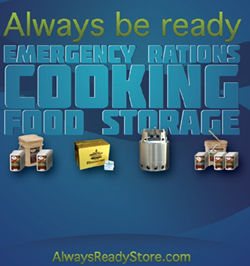Power Outage Survival Guide: How to Stay Cool and Safe During Extreme Summer Heat
Summer Power Outage Survival Guide will help you prepare as climate change continues to impact our weather patterns, the frequency and intensity of heatwaves are on the rise. With this comes an increased risk of power outages during the hottest months of the year. Losing power during a heatwave can be more than just an inconvenience – it can be downright dangerous. Extreme heat is the leading cause of weather-related deaths in the United States, claiming an average of 702 lives per year, according to the Centers for Disease Control and Prevention (CDC). In this comprehensive guide, we’ll cover everything you need to know to prepare for and survive a summer power outage, including the risks, essential supplies, cooling strategies, and the importance of community support.
The Risks of Power Outages During Extreme Heat:
Power outages during heatwaves can occur for various reasons, including increased energy demand, heat-related equipment failures, and severe weather events. When the power grid is strained and unable to meet the high demand for air conditioning, rolling blackouts may be implemented to prevent a complete system failure. In other cases, extreme heat can cause transformers and other electrical equipment to malfunction, leading to outages.
During a power outage, the lack of air conditioning, fans, and other cooling devices can quickly lead to dangerous indoor temperatures. This puts everyone at risk for heat-related illnesses, such as heat exhaustion and heat stroke, but some populations are more vulnerable than others. The elderly, young children, and people with chronic medical conditions are particularly susceptible to the effects of extreme heat. Additionally, those living in urban areas may be at higher risk due to the “urban heat island” effect, where concrete and asphalt surfaces absorb and radiate more heat than natural landscapes.
Essential Supplies for a Summer Power Outage:
To prepare for a summer power outage, it’s crucial to have an emergency kit stocked with essential supplies. This kit should include enough water and non-perishable food to last at least 72 hours, with a minimum of one gallon of water per person per day. Other essential items include a first aid kit, prescription medications, a battery-powered or hand-crank radio for updates on the outage and weather conditions, flashlights and extra batteries, portable battery-operated fans, cooling towels or gel packs, and backup power sources, such as a generator or solar chargers (if possible).
In addition to your emergency kit, it’s important to prepare your home for extreme heat. This can include installing blackout curtains or thermal blinds to block out sunlight, sealing air leaks to keep hot air out and cool air in, and ensuring your air conditioner is in good working order before a heatwave strikes.
Staying Cool During a Summer Blackout:
If a power outage occurs during extreme heat, your top priority should be staying cool and hydrated. Drink plenty of water throughout the day, even if you don’t feel thirsty. Avoid alcohol and caffeine, as these can contribute to dehydration. Dress in loose, lightweight, and light-colored clothing to help your body regulate its temperature.
To create a cooler environment inside your home, close windows and blinds during the hottest part of the day to keep the sun’s heat out. In the evening, open windows on opposite sides of your home to create a cross-breeze and use battery-operated fans to circulate the air. You can also create a makeshift cooling station by placing a bowl of ice or frozen water bottles in front of a fan.
If your home becomes too hot to bear, seek out cool public spaces such as shopping malls, libraries, or designated cooling centers. Many cities and towns offer these air-conditioned spaces during heatwaves to provide relief for those without power.
The Role of Community in Surviving a Summer Power Outage:
Community support is essential during a summer power outage. Check on elderly neighbors, young children, and those with medical conditions to ensure they are staying cool and have access to necessary supplies. If you have a backup power source, consider sharing it with neighbors who may be more vulnerable to the heat.
Local governments and community organizations often play a crucial role in providing resources and support during extreme heat events. Stay informed about available resources, such as cooling centers, transportation to cool locations, and distribution of water and other essential supplies. You can find this information through local news outlets, social media, and your city or town’s website.
It’s also important to be aware of the signs of heat-related illnesses and to check on loved ones and neighbors regularly. Our Summer Power Outage Survival Guide will help identify symptoms of heat exhaustion include heavy sweating, weakness, cold and clammy skin, fast or weak pulse, nausea, and fainting – so you are better aware. If left untreated, heat exhaustion can progress to heat stroke, a life-threatening condition characterized by a high body temperature, hot and dry skin, rapid pulse, and altered mental state. If you suspect someone is experiencing a heat-related illness, call emergency services immediately.
Conclusion:
As the threat of summer power outages during extreme heat continues to rise, it’s more important than ever to be prepared. By understanding the risks, stocking up on essential supplies, knowing how to stay cool, and supporting your community, you can weather the storm and stay safe during a summer blackout.
Remember, preparation is key. Don’t wait until the power goes out to start thinking about how to stay cool and safe. Take action now to create an emergency plan, build your kit, and fortify your home against extreme heat. By doing so, you’ll not only protect yourself and your loved ones but also contribute to the resilience of your community in the face of a changing climate.








0 Comments